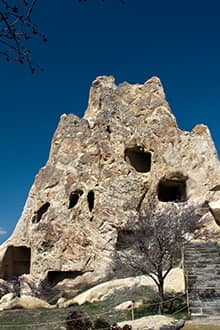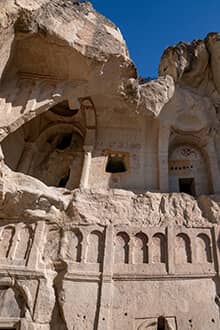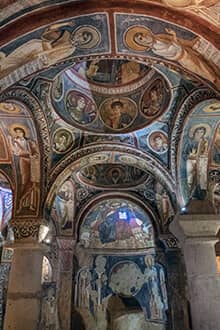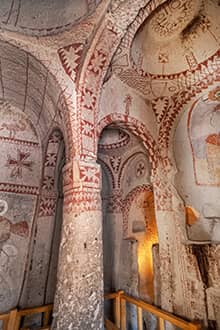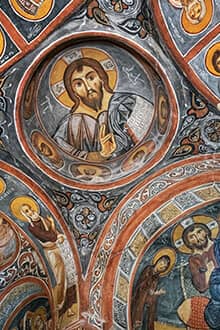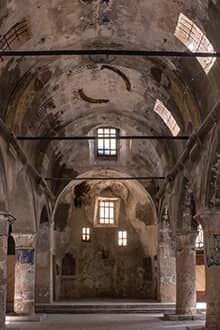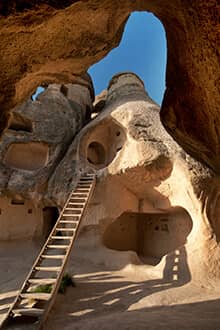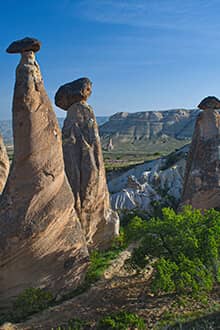

Cappadocia in Early Christianity
Göreme / Ürgüp / Avanos, Nevşehir – Niğde – Aksaray – Kayseri
This rocky wonderland in the center of Türkiye was shaped by millions of years of geological phenomena brought about by the eruptions of three volcanoes surrounding the region. Erosions shaped the thick ash, which solidified into a soft rock known as “volcanic tuff.” Wind and water worked on this plateau, leaving only the harder elements to form a fairy-tale landscape.
The region became a refuge for early Christians fleeing Roman persecution who created a handcarved network of underground settlements. Monks excavated extensive dwellings and monasteries and covered them with beautiful Byzantine frescoes.
Early Christians settled within the triangle between Nyssa, Nazianzus, and Caesarea, and lived a monastic life as taught by Saint Basil the Great (c. AD 330-379), who had become Bishop of Caesarea (modern-day Kayseri) in AD 370.
Saint Basil the Great together with Gregory the Theologian from Nazianzus (Nevşehir) and his brother Gregory of Nyssa (Niğde) are known as the "Cappadocian Fathers." They laid the foundation for the theology of the Christian doctrine of the Holy Trinity.
Saint Basil the Great was born at Caesarea, Cappadocia around AD 330. It was under his guidance that the first churches were built in Göreme Valley. Here, a number of small communities with their own churches formed the large monastic complex that is now the Göreme Open-Air Museum. In Göreme, Tokalı Kilise (Church of the Buckle) and Karanlık Kilise (Dark Church) are exceptional examples with graceful arches and beautiful frescoes.
The earliest record of the underground settlements of Cappadocia is found in Xenophon's Anabasis. However, based on various historical sources Hittites may have actually been the first inhabitants of the underground settlements of Kaymaklı and Derinkuyu. With its rich history and unmatched geological formation, Cappadocia is listed on the UNESCO World Heritage List under “Göreme National Park and Rock Sites of Cappadocia.”

